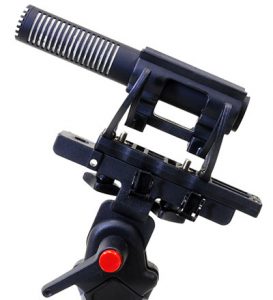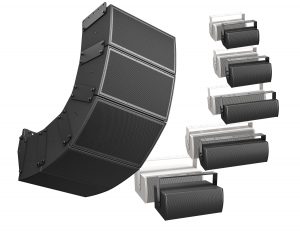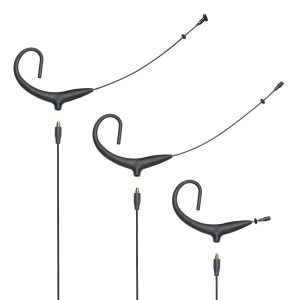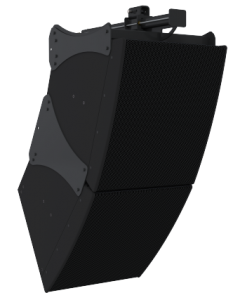InfoComm 2019: Big Sound for Sports Is Big Business
Sports venues are frequent case studies at the live-sound expo
Story Highlights
By the time InfoComm 2019 ended last Friday, a record 44,129 registered attendees had passed through the portals of the massive Orange County Convention Center in Orlando. Besides the nearly 1,000 exhibits on the show floor, they had visited two dozen demo rooms, most housing some of the largest live-sound systems on the market and reflecting the show’s recently established status as the premier North American expo for live sound. And sports venues were used to illustrate each system’s strengths as often as, if not more than, the more traditional music-touring case studies.
Bose Professional, d&b audiotechnik, L-Acoustics, Electro-Voice, Danley Sound Labs, Meyer Sound, QSC, Renkus-Heinz, Community Sound and Yamaha/Nexo were some of the brands doing scheduled demos of their systems, often in adjacent rooms that necessitated alternating show times to avoid wall-shaking cacophony.
The sheer number of brands showing systems underscored the value of the live-event market in the U.S. Last year, live events generated $136.9 million of direct spending worldwide, with North America representing 44% of that, according to the Oxford Economics and Events Industry Council; music touring added another $10.4 billion. With many of those ticket dollars spent on shows playing in sports stadiums and arenas, it was not surprising that both sports and music-touring applications headlined the use cases illustrating the capability of these manufacturers, who came from France, Germany, Italy, Spain, China, and Canada, as well as the U.S.
“Live sound in the sports-venue sector is really robust,” observed Dan Palmer, business development manager, sports facilities, U.S. and Canada, L-Acoustics, from the show floor. “And we’re pushing the limits on the performance level of what these systems can do in a sports arena or stadium. Concert-level sound systems in sports venues are a reality now. The sports experience has become elevated, and the sound has now met those expectations.”
Palmer also moderated a panel at InfoComm 2019. “Players and Perspectives in Sports Venue Sound System Integration,” co-hosted by L-Acoustics Application Manager, Sports Facilities, Gino Pellicano, brought together AV systems integrators Jamie Gillespie (Pro Sound & Video) and Justo Gutierrez (Diversified); systems designer Craig Janssen (Idibri); and Scott Kalarchik, director, engineered systems, QSC, for a wide-ranging discussion on the challenges of sound-system integration in sports arenas and stadiums. Areas covered included the overall complexity of sound-system integration in major sports venues as part of a larger AV picture; stakeholder roles involved; and key considerations in implementing sound solutions in stadiums and arenas.
The discussion touched on esports as well. “It’s here to stay. Any sense that it’s a fad is gone,” said Palmer, noting the large esports arena, fitted with an L-Acoustics system, at nearby Full Sail Academy, which was also an offsite visit on the InfoComm conference agenda. “Esports is now on college curriculums, and it’s going to need full-scale venues in which to play matches, with major-league–level audio and video.”
Lots To See and Hear
Although this wasn’t a broadcast show, manufacturers in that sector were well-represented, including Evertz, Panasonic, Sony, Audio-Technica (and sister wireless company Alteros), Shure, Sennheiser, Telos Alliance, Pliant Technologies, and Clear-Com. Although complex live events routinely use broadcast-type systems — including cameras, switching and intercoms — AV over IP, in the form of streaming media, is quickly creating a more unified media proposition, one that scales from major-league events to just north of the sandlot. Companies like Marshall and Vaddio showed new USB 1080p cameras, and MXL, Beyerdynamic, and others exhibited new USB microphones (a category further propelled by the recent popularity and proliferation of podcasts).
InfoComm 2019 had plenty more to see and hear:
Sanken Microphones (distributed by Brainstorm) introduced the CMS-50 compact-shotgun stereo condenser microphone. Ideal for boom-pole or camera-mounted operation, the mic is especially suited to ambient sports recording and shoots where tight patterns and premium sound are sought. M-S (mid-side) configuration makes it convenient to adjust the stereo width at the mixer or in postproduction. The mic includes two outputs: cardioid and figure-8. (Available this month. MSRP: $1,795.)
The Telos Alliance introduced Telos Infinity Link, the latest addition to the Telos Infinity IP intercom platform. The Opus-codec–based product is available as a series of software licenses that can be added to any host Infinity panel or beltpack hardware, unlocking two, four, or eight embedded codecs that convert WAN-side VoIP to LAN-side Livewire+ AES67. A dedicated 1RU Gateway device is also available, supplied with dual AC power and dual Gigabit Ethernet connections, supporting either eight or 16 embedded codecs.
Bose Professional showed the new ArenaMatch DeltaQ loudspeakers and ArenaMatch Utility loudspeakers. DeltaQ technology allows directivity, or “Q,” to vary in each module to more precisely match coverage to audience area. This flexibility allows asymmetrical coverage patterns, improved sightlines due to reduced module counts, reduced array weight, and lower overall system costs compared with many conventional arrays. Each Bose ArenaMatch array module houses a 14-in. neodymium woofer and six Bose EMB2S titanium-diaphragm neodymium compression drivers.
Pliant Technologies introduced MicroCom, its newest wireless intercom system. Available in 900 MHz (where legal), MicroCom provides single-channel, full-duplex, multi-user intercom for applications where high-quality audio, excellent range, and low cost are essential. The system features small, water-resistant lightweight beltpacks and provides excellent sound quality, ease of use, and long-life battery operation. In addition, the SmartBoom series of Pliant headsets has been expanded to include versions for use with MicroCom beltpacks.
Audio-Technica unveiled the BP892x, BP893x, and BP894x MicroSet head-worn microphones — updated versions of its BP892, BP893 and BP894 models. Primary improvements include detachable cables and more-secure ear loops for comfort and fit. All models will be available with a variety of terminations for wired, Audio-Technica, and third-party wireless systems and in black or beige. The high-SPL BP892x MicroSet microphone features a subminiature omnidirectional condenser capsule that delivers intelligible, natural audio with a flat, extended frequency response ideal for television talent. The ultra-lightweight and inconspicuous BP892x hooks securely behind either ear and can be worn for hours without fatigue.
Community Professional showed two new major product lines: the L Series LVH-900 loudspeaker system, with beam-forming technology that addresses the unique coverage and projection challenges of large venues and stadiums, and Amplified Loudspeaker Controllers (ALC). Each LVH-900 consists of four 12-in. LF drivers, three Community M200 midrange compression drivers, and four 1.5-in. HF compression drivers. All drivers integrate into a single tri-axial waveguide that fills the entire 36- x 31-in. face of the enclosure, providing pattern control to below 200 Hz. The new ALCs are designed to provide all the signal routing, zone switching, DSP processing, protective limiting, remote monitoring, and amplification functions needed between a mixer and the loudspeakers in virtually any small to medium-size Community loudspeaker installation. Standard Ethernet communication protocols allow for system design, system control, and remote system monitoring.
Dante debuted the Updater. The free Dante firmware-management application for Windows and MacOS desktops greatly improves the user experience of updating Dante-device firmware, allowing entire networks of devices from multiple manufacturers to be updated with just a couple of clicks.




